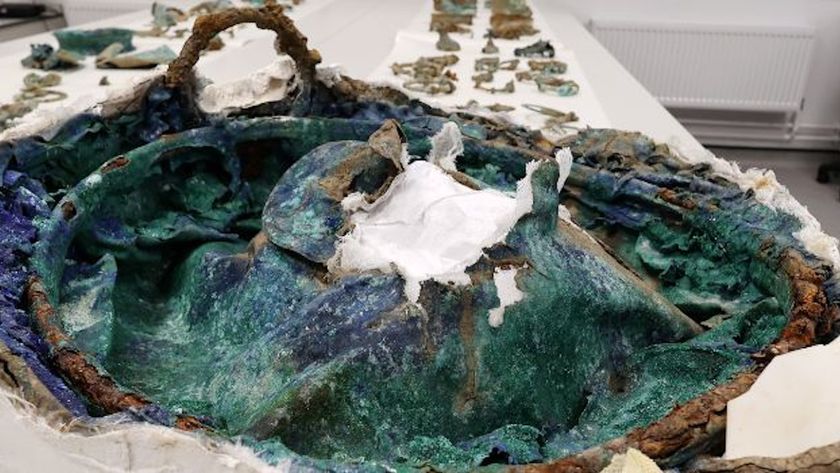Hard-To-See Meteor Shower Observed from Arctic
On the evening of January 3, 2008, NASA Ames Research Center and SETI Institute hosted an airborne observing campaign that took an international team of 14 researchers above the Arctic Circle and back in a privately owned Gulfstream V aircraft for an unprecedented view of a mysterious meteor shower called the "Quadrantids." The first impressions, images, and predictions are posted at the Quadrantid Multi Instrument Aircraft Campaign (Quadrantid MAC) mission website.
For eight hours, six visual observers scanned the video output of four intensified cameras that were aimed low above the crystal-clear horizon. We counted meteors and the tally provided our first solid glimpse at the fascinating origin and history of the Quadrantid meteor shower. We found the highest rates occurred around 8h UT. This is later than all of our advance predictions (02:00 UT to 07:37 UT), which has caused some head scratching among the modelers in our team.
We observed these natural New Year fireworks from a lofty altitude of 47,000 ft. during a peculiar roundtrip from the Bay Area to the Bay Area, via the Arctic Circle. The mission departed during one of the strongest rainstorms to hit the area in two years. When the aircraft emerged from the cloud deck, the sky was brilliantly clear and remained so throughout the mission. The view over the horizon provided a large surface area for spotting Quadrantid meteors, little dimmed by the low atmospheric extinction at altitude.
The mission path was designed to compensate for the rotation of the Earth and kept the shower in view throughout the mission. Observers on the ground are plagued by the fact that the Quadrantids are mostly a daytime shower, disappearing from view around midnight when the radiant of the shower sinks below the horizon, only to appear again in the early morning hours. The Quadrantid shower is only about 8 hours wide at half the peak rate. The shower is impressive only when the peak happens to occur in the early morning hours at your local site. At that time, it can outshine other strong annual showers including the Perseids and Geminids.
By flying north when the radiant was about to set, and returning south when the radiant was again rising, we kept the radiant at an elevation between 15 and 30 degrees throughout the mission. This meant that the Quadrantids were entering the atmosphere at a shallow angle and created long-lasting and slow-moving meteors. We counted some 846 of these shooting stars during the flight. This was the very first time that the Quadrantid shower was observed under nearly constant conditions for the entire period during which the peak might occur.
The Quadrantid shower is caused by a steeply inclined sheet of meteoroids that stretches from Earth's orbit to the orbit of Jupiter, where the heavy planet frequently scatters the meteoroid orbits in and out of Earth's path. Potentially, this can lead to large variations in peak activity and in peak time. Our goal for the mission was to start disentangling those effects from the reported variations caused by the difficult and changing observing conditions on the ground.
How much influence Jupiter has depends on how much dispersion the Quadrantid orbits have accumulated over time. The dispersion depends on the age of the shower and how the stream was created. Like most of our meteor showers, the stream appears to have been created in a breakup of a comet, instead of from a slow and gradual oozing out of water vapor. Likely, the massive stream is younger than 500 years. About 500 years ago, in A.D. 1490-91, Chinese observers reported a comet moving in the same plane as that of the Quadrantids. We are now investigating whether or not this comet C/1490 Y1 represents the moment in time that the Quadrantid parent body broke and created the massive stream. In 2003, we discovered that a minor planet called "2003 EH1" moves among the meteoroids. This now-dormant remnant of the breakup provides an anchor to investigate the origin and evolution of the stream, but the current models that predict how the stream manifests 500 years later are clearly insufficient.
Sign up for the Live Science daily newsletter now
Get the world’s most fascinating discoveries delivered straight to your inbox.
Our team collected other evidence about the origin of the stream. The 2008 Quadrantid MAC mission deployed a total of 25 cameras of various sorts and purposes. We measured spectra for main element composition of the dust, light curves to investigate how the grains break upon entering the atmosphere, and meteoroid size distributions to understand the fragmentation processes during formation of the stream.
We thank all the individuals and organizations that made this mission possible. Once we understand what happened in 2008, we all hope to verify that with another Quadrantid MAC mission some time in the future.










